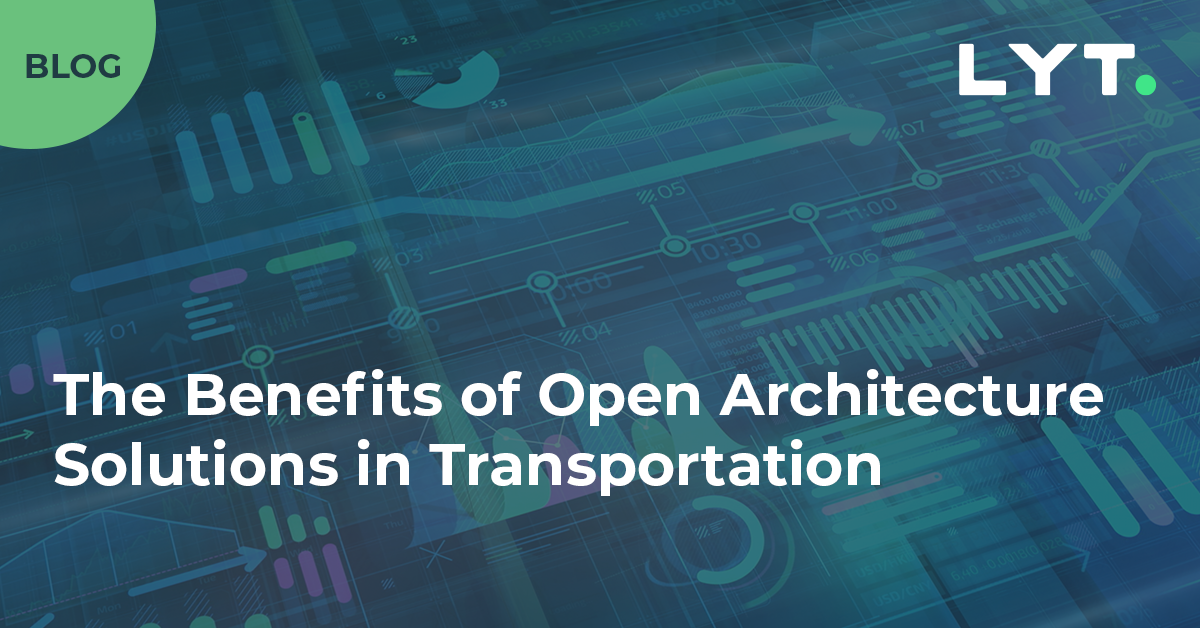Open architecture systems make designing software services functional and straightforward to upgrade, hence why they’re a vital component of artificial intelligence and cloud-based platforms.
The development and use of artificial intelligence (AI) across multiple industries is nothing new. Once ChatGPT took the world by storm in December of 2022, AI was quickly the topic of conversation. However, artificial intelligence in finance, manufacturing, and transportation is just starting to take shape.
Open architecture (OA) systems are critical for local municipalities, governments, and companies to harness the power of AI and cloud-based learning. Today, we will share the benefits of open architecture solutions and how LYT’s clients benefit from OA in conjunction with LYT transportation solutions.
Benefits of Open Architecture Traffic Solutions
The Gartner Group defines open architecture as “a technology infrastructure with specifications that are public, as opposed to proprietary. This includes officially approved standards as well as privately designed architectures, the specifications of which are made public by their designers.”
While this might seem complicated, generally speaking, most software products harnessing AI are either open or closed.
Let’s use an analogy to help further understand. Think of open architecture systems as a bustling international airport. Flights from various airlines, hailing from all corners of the world, are able to land, take off, and utilize the airport’s infrastructure. Each airline, with its unique protocols and procedures, can operate seamlessly within this shared space. Just as an airport’s standardized procedures and infrastructures allow for these diverse operations, open architecture systems in technology provide the ‘runways’ and ‘terminals’ for various software components to coexist, integrate, and collaborate. Let’s take a closer look.
Better Collaboration
Unlike closed architecture systems, which are tightly controlled by developers, open architecture (OA) allows hardware, software, and algorithms from different suppliers to work together. Or in the case of LYT’s transportation solutions – its open architecture features allow their cloud-based learning systems to work with existing technology infrastructure.
While it may seem counterintuitive, open architecture software has demonstrated that it can not only meet but also enhance security standards. Open architecture promotes interoperability and the clear documentation of interfaces, reducing the likelihood of hidden vulnerabilities or security flaws.
While this might not seem like a big deal when considering software, in the transportation sector, it is a game changer. For starters, most traffic management technologies require lengthy install times (months), clunky hardware, antiquated systems, and opaque, “black box” functionality with little to no insights into how the technology works or what its impact is.
Time Saving
On the other hand, open architecture allows for LYT solutions to be installed in a matter of hours. We use AI cloud-based software to integrate into the existing hardware already trusted within the city. The software communicates with the city’s hardware using a transparent, well-documented standard across multiple hardware vendors that the city likely already has knowledge of and experience with.
The open architecture technology enables traffic to be managed centrally, and traffic managers can achieve operational efficiencies. By integrating the open architecture systems, the software improves over time by learning from past traffic patterns, further enhancing real-time performance, and provides useful and actionable insights. For example, LYT’s Travel Analytics Portal helps clients gain real-time insights into networked traffic signals, thus making real-time decisions that can be implemented in a matter of hours. From providing a reliable green for transit priority to emergency vehicle preemption, the transportation sector is seeing firsthand how AI and OA systems are revolutionizing the industry.
Cost Saving
An advantage to open architecture is not only the technologies behind it but the cost. Unlike closed architecture, where a buyer is locked in with a specific vendor, open software architecture costs are generally lower with fewer barriers. As antiquated hardware-based TSP and EVP systems age, the reliability of those systems to work decreases significantly. Each replacement part is a costly investment, but with an open-architectured solution, like LYT.transit or LYT.emergency, no hardware is needed and the solution still works with the existing CAD/AVL system and traffic controllers.
Why is open architecture so beneficial?
For cities and municipalities looking to dial in on their traffic solutions, open architecture solutions give them the flexibility they seek. Other systems tend to be more expensive, require massive hardware overhauls, offer little transparency or insights, and without leveraging open architecture platforms, quickly grow outdated.
To put it another way, when you use OA the return is a highly adaptable and easily modifiable system that also costs less to maintain. For more information or to schedule a demo with the LYT team, reach out here.




1 Comment